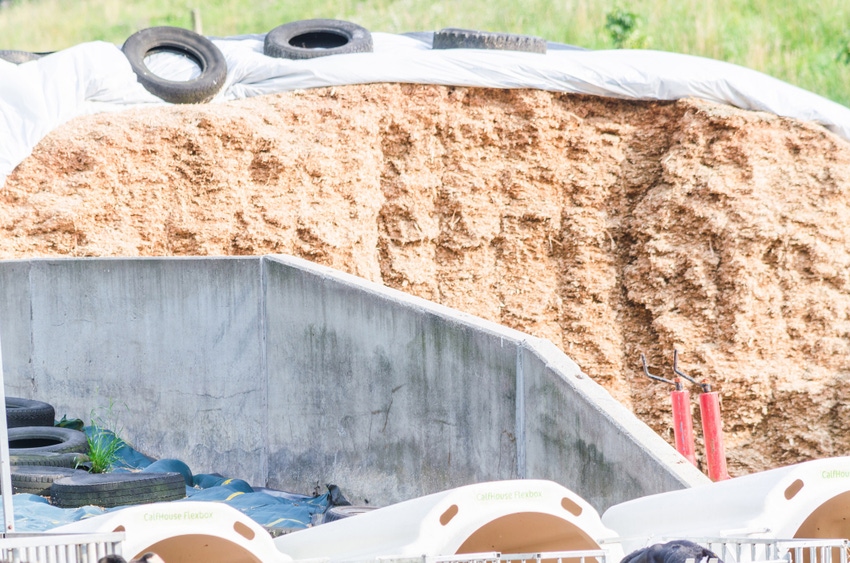Corn silages in some regions may have more moisture, less starch and more residual sugar content, which may lead to changes in ruminal fermentation in dairy cattle.
September 10, 2019

Properly fragmented corn kernels in silage allow dairy cows to make the most of the starch component in silage, paving the way for energy and milk production, according to Lallemand Animal Nutrition.
Properly breaking up the corn kernels by efficiently processing the corn at silage harvest helps open the path to energy and milk production, but starch digestibility is also directly affected by the ensiling process itself, Lallemand said.
“In the fall, dairy producers often see a slump in milk production, or they just aren’t able to reach production targets when switching from old silage to the new crop,” said Tony Hall, technical services-ruminant, Lallemand Animal Nutrition. “This may be because the starch in freshly ensiled corn silage isn’t as digestible as it is in corn silage that’s been stored for months.”
In addition to fluctuations in starch content, Hall said there will be the normal variances in dry matter (DM), kernel processing score and nutrient content from one silo to the next and from one year to the next.
Starch availability takes time
Starch is arranged in granules surrounded by proteins that are degraded over time in the stored silage. After several months, the starch is more readily available for microbial fermentation in the rumen, Hall explained noting that in vitro studies have shown about a 20% difference in ruminal starch digestibility after eight months of fermentation.
Fiber digestibility has a big impact on milk yield. A two- to three-unit change in ration total tract neutral detergent digestibility has been shown to correspond to a 1 lb. per cow per day change in milk yield, Hall said.
“If possible, wait to open new silage until the starch becomes more digestible,” Hall suggested. “Ideally, producers should wait at least three to four months before feeding. Research suggests anything less than eight months may mean you are leaving money on the table.”
The good news is that producers can make adjustments at harvest, during ensiling and after the new silage is opened, Lallemand noted.
Adjustments to maintain production
During harvest, Hall recommended adding a silage inoculant containing enzymes to help break down plant fiber, which can improve fiber digestibility. The product label should clearly indicate guaranteed levels validated by independent research studies, he said.
When producers are ready to open the new silage, make the transition gradual — over a 10- to 14-day period — and adjust the ration to balance changes in DM and nutrient content. New silage can be introduced as 25% of the silage portion of the ration in the first three days, then 50% of the ration the next three days and so on until the transition is complete, Hall said.
This will be particularly important this year, as newly introduced 2019 corn silages may have a lot more moisture, lower starch content and higher residual sugar content, he added.
During the transition from old to new silage this winter, herds are likely to be vulnerable to sub-acute ruminal acidosis (SARA) due to high levels of fermentable sugars in the silage, according to Lallemand. The signs for SARA often are undetectable, but it affects about 40% of dairy cattle throughout their lactation and as many as 70% of first-lactation cows, resulting in large financial losses. SARA is a major concern related to animal performance, health and well-being, the company added.
Supplementing feed with an active dry yeast probiotic can help maintain a healthy pH level and improve fiber digestibility in the rumen, Lallemand said.
“When SARA occurs, it’s difficult for cows to make the best use of any ration — no matter how expertly analyzed or carefully introduced,” Hall said. “It usually takes time in storage for the starch component of silage to become more available. However, all bets are off this year, as many regions will have corn silage that is in lower in total dry matter and starch levels. Due to the high residual sugar content and more digestible starch, it will be easier to ferment in the rumen. In the meantime, producers can make the silage changes gradual and use a proven probiotic to help optimize the rumen function and maintain optimal performance during any change to the ration.”
Source: Lallemand Animal Nutrition, which is solely responsible for the information provided and is wholly owned by the source. Informa Business Media and all its subsidiaries are not responsible for any of the content contained in this information asset.
You May Also Like


.png?width=300&auto=webp&quality=80&disable=upscale)
